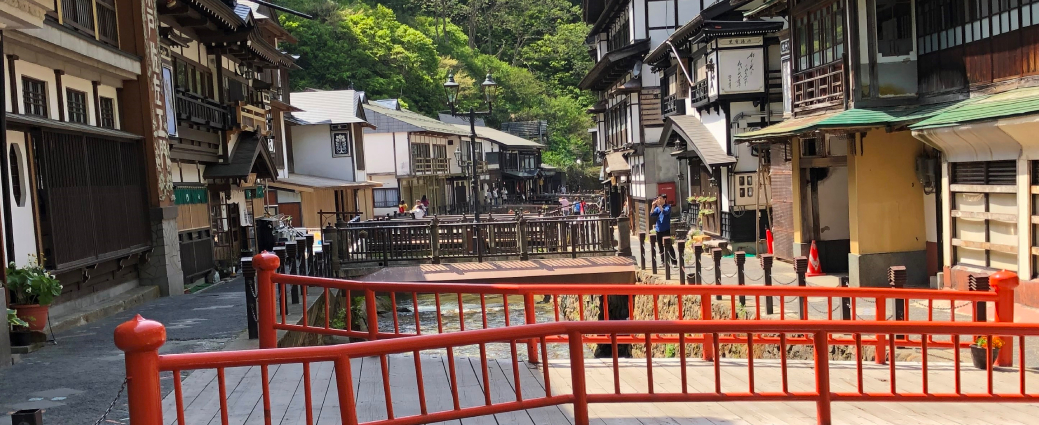Ginzan Onsen
Category: Hot Springs Tags: Ginzan, hot springs, onsen, tohoku
Ginzan Onsen is a remote hot spring town deep in the mountains of Yamagata Prefecture. It is known for its collection of traditional wooden ryokan built on either side of the river that flows through the town. These three or four storey buildings with exposed woodwork and white plaster walls are redolent of times gone by. For this reason, Ginzan Onsen is a popular destination for holiday makers and can be crowded at times.
At night, the lights from the ryokan and gas lamps along the streets and bridges make for a delightful scene. In winter, with snow covering the rooftops and pavements, this is even more lovely. The entire centre of the small town is closed to traffic and is pedestrianised and its length can be walked in a few minutes.
Each of the town’s ryokan offers their own hot spring baths and there are also two public baths which can be enjoyed for 500 yen each. Most of the ryokan’s baths can also be taken by non residents during the daytime and many feature historic indoor baths.
There is a 22 metre high waterfall at the far end of the town. Near its base is one of the entrances to the old silver mine from which the town gets its name. There is a short hiking trail which continues for around 15 minutes’ walk past the waterfall and at its end, a small section of the old mine is open to the public.
Regrettably, there was no room at any of the inns when I came to visit Ginzan Onsen but I spent an enjoyable few hours strolling the town and its surroundings. Initially making the mistake of driving in and discovering that it was closed to all non resident traffic, I had to reverse for some distance, past all the tourists walking down into the town, until I could find a spot to execute a three point turn and head to the carpark a short distance out of town. 'Town' is probably a misnomer for Ginzan Onsen - it's really a few streets surrounding the river flowing through and everything is easily walkable. Having made my way back in on foot, I strolled along with the crowds of tourists, browsing the many souvenir shops that are found tucked in between the ryokan. The whole place, while definitely feeling touristy, is certainly charming and really evokes a sense of bygone times. One ryokan though does stand out from the rest - the Fujiya Ryokan, which was redesigned and rebuilt by famed architect Kengo Kuma in 2006. Its design holds true to the original 100 year old building but has revamped it with a striking modern style, which is especially noticeable when peeking inside the building, as I did. I would love to come back and spend a night in Ginzan Onsen one day, to enjoy its oft photographed evening scenery but for now, I'll remember its charming bridges and old world style.
RobinContact us
Tel: 01865 841443
Fax: 01865 841445
Into Japan Specialist Tours
The Dovecote, Manor Farm, Ball Lane, Tackley, OX53AG


